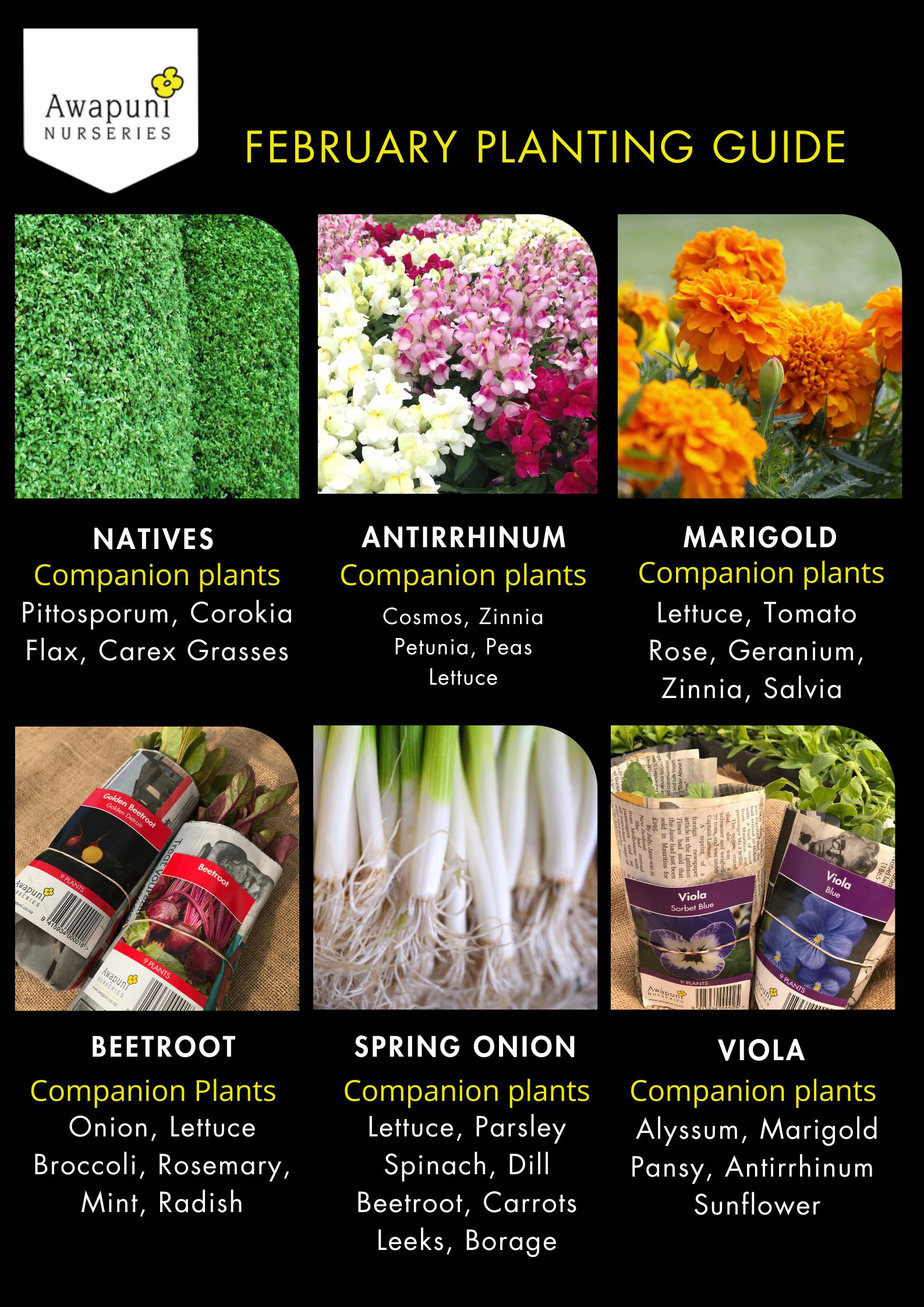Now it’s time to get a list of veges to plant as the season ends and prepare the soil for the next season!
Tidy Up
Keep harvesting!
Deadhead flowers to encourage more flowering.
Trim hedges and do some weeding.
Trim off tired looking leaves on your herbs, flowers and vegetables.
Flower Garden
Plant more flowers around your vegetables. Many flowers like petunias, marigolds, lavender emit fragrances that naturally repel pests and unwanted insects. Different colourful blooms also bring in more pollinators that enhance yield. Try planting seedlings of marigolds, lobelias, gazanias, lavender, cornflower this February and get them established and flowering by autumn.
It's a great time to plant canterbury bells, antirrhinums (commonly known as snapdragons or dragon flowers), cornflowers, stock, hollyhocks and wallflowers.
Vege and herb garden
Consider staggered planting - plant something new every few weeks starting now to prepare for the colder months. Alternate planting lettuces in between brassicas to ensure a fresh supply throughout the colder season.
It's a great time to plant:
Herbs - coriander, dill, basil and parsley.
Veges - brassicas (broccoli, cauliflower, cabbages, brussel sprouts, pak choy, kale, kohlrabi), carrots, spring onions.
Natives
Yes, you can plant natives now. Natives are highly tolerant of New Zealand’s unique environment. Awapuni Nurseries, at the moment, is getting geared up to supply tons of natives of different varieties: grasses, hedges, trees, shrubs in time for them to get established during the cooler months. When the temperature is too hot and the sun is strong, make sure the natives are well-watered. Awapuni Nurseries has a wide range of hebe varieties this season.
Wet weather tips
For many regions in New Zealand this year, there's been awful, unpredictable weather, we hope these tips help:
1. Check your drainage: Ensure that your garden has proper drainage to avoid waterlogged soil. This can possibly lead to root rot.
2. Mulching helps reduce surface runoffs by absorbing rainwater.
3. Watch out for pests and diseases: Rainy weather can increase the risk of pest and disease outbreaks, so be vigilant and act promptly to prevent them from spreading.
4. Choose suitable plants: Select plants that are well-suited to your local climate, including those that are tolerant of excessive moisture. Natives are really good in preventing soil erosion and handling New Zealand's unique weather conditions.
Flaxes and native grasses can be planted along banks to hold the soil together.
Kowhai, Lemonwood (Pittosporum Eugenoides) and Cabbage trees are effective in minimising soil erosion.
5. Look out for plants that need pruning. Appropriate pruning will help prevent spread of diseases.
6. Keep your lawns tidy to prevent disease and promote healthy growth of other plants in the garden.
7. Minimise foot traffic in the garden as this compacts the soil and may cause plant damage.
For more tips, check our gardening guides. View our planting calendar to see which plants are in season.
